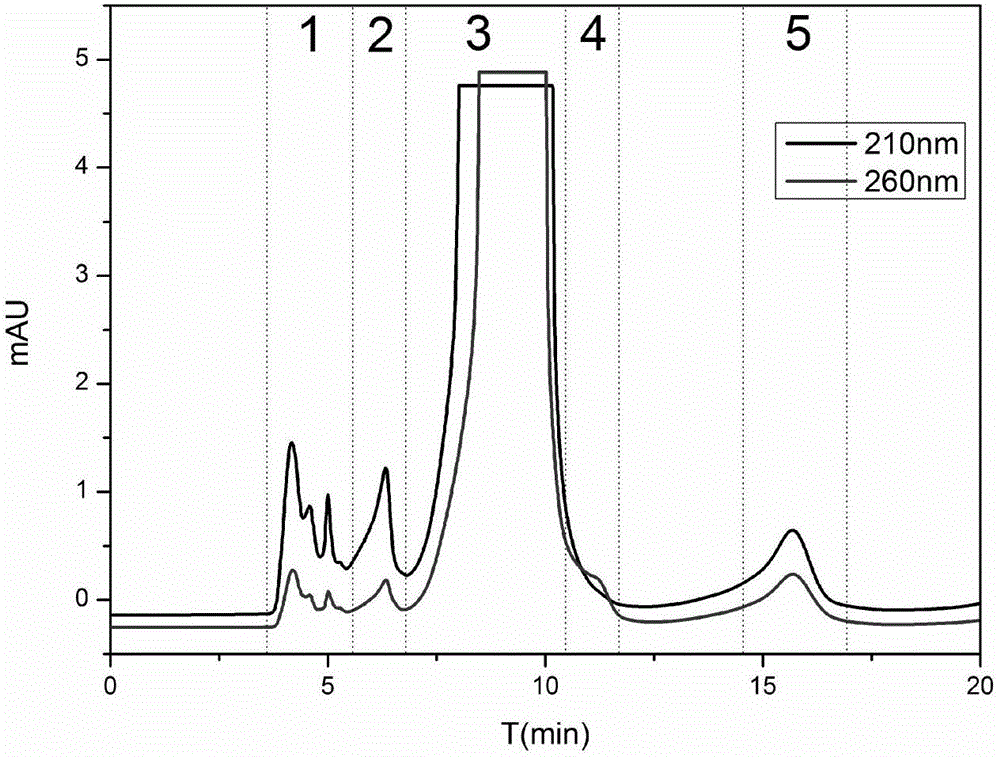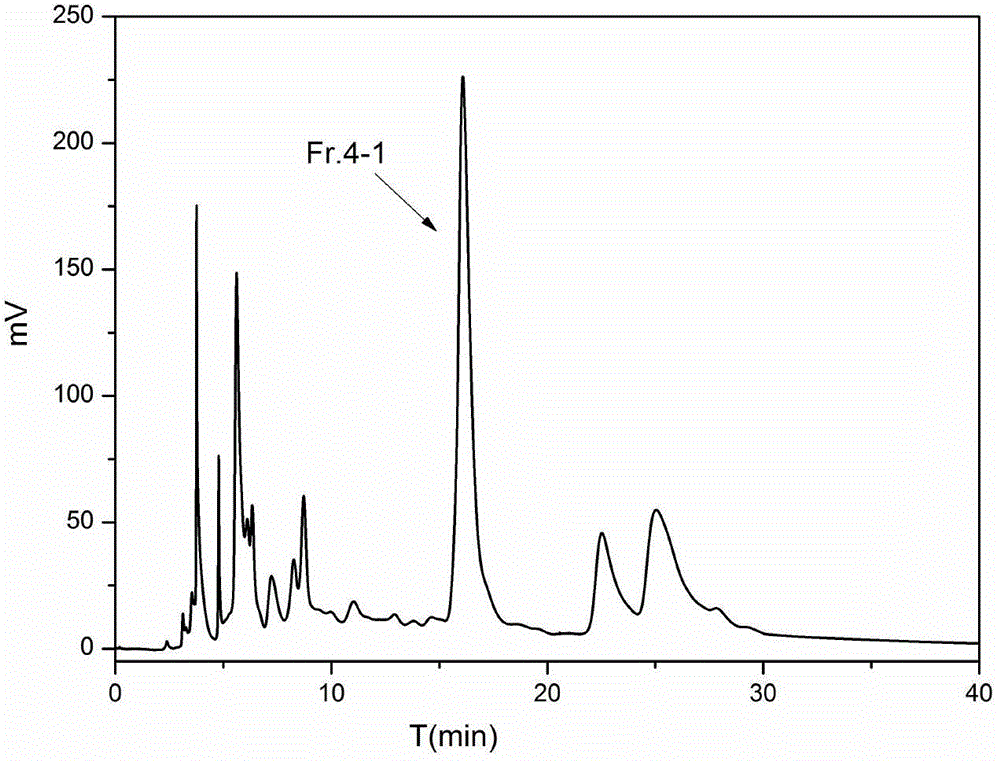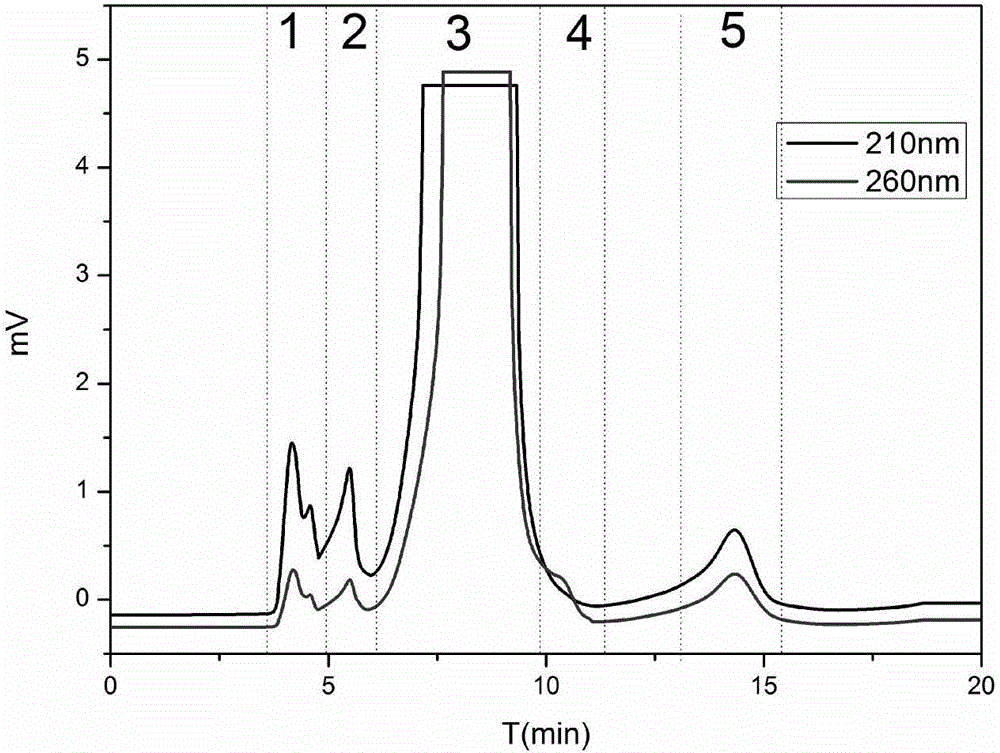A method of extracting flavonoid compounds from tagetes erecta
A technology of flavonoids and marigolds, applied in the direction of organic chemistry, can solve the problems of poor preparation process efficiency, low sample purity, poor repeatability, etc., to achieve reduced column elution time, high degree of instrument automation, and consistency high effect
- Summary
- Abstract
- Description
- Claims
- Application Information
AI Technical Summary
Problems solved by technology
Method used
Image
Examples
Embodiment 1
[0040] The present embodiment extracts the method for flavonoid compound component from marigold, comprises the following steps:
[0041] Take dried marigold flowers as raw materials, grind them into powder, extract and rotary steam with ethanol to obtain dried marigold coarse powder, weigh 5g, dissolve in 50mL of 95% methanol-water solution, and prepare a marigold extract solution with a concentration of 100mg / mL, passed through a 0.45 μm microporous membrane, and prepared by one-dimensional liquid chromatography. One-dimensional liquid chromatography using reversed-phase column DAISOC 18 (250mm×20mmi.d., 8μm), the mobile phase is a mixture of organic phase and water phase, where A phase is water, B phase is methanol, isocratic elution method: B phase concentration 53% isocratic elution 20min . Using UV detector 210nm and 260nm as dual selective absorption wavelengths, preparation temperature is room temperature, injection volume is 500μL / needle, mobile phase flow rate is ...
Embodiment 2
[0043] The present embodiment extracts the method for flavonoid compound component from marigold, comprises the following steps:
[0044] Take dried marigold flowers as raw materials, grind them into powder, extract and rotary steam with ethanol to obtain dried marigold coarse powder, weigh 5g, dissolve in 50mL of 95% methanol-water solution, and prepare a marigold extract solution with a concentration of 100mg / mL, passed through a 0.45 μm microporous membrane, and prepared by one-dimensional liquid chromatography. One-dimensional liquid chromatography using reversed-phase column DAISOC 18 (250mm×20mmi.d., 8μm), the mobile phase is a mixture of organic phase and water phase, wherein A phase is water, B phase is methanol, isocratic elution method: B phase concentration 50% isocratic 20min. Using UV detector 210nm and 260nm as dual selective absorption wavelengths, preparation temperature is room temperature, injection volume is 500μL / needle, mobile phase flow rate is 12mL / min...
Embodiment 3
[0046] The present embodiment extracts the method for flavonoid compound component from marigold, comprises the following steps:
[0047] Take dried marigold flowers as raw materials, grind them into powder, extract and rotary steam with ethanol to obtain dried marigold coarse powder, weigh 5g, dissolve in 50mL of 95% methanol-water solution, and prepare a marigold extract solution with a concentration of 100mg / mL, passed through a 0.45 μm microporous membrane, and prepared by one-dimensional liquid chromatography. One-dimensional liquid chromatography using reversed-phase column DAISOC 18 (250mm×20mmi.d.; 8μm), the mobile phase is a mixture of organic phase and water phase, in which phase A is water, phase B is methanol, isocratic elution method: the concentration of phase B is 54% isocratic elution for 20min . The ultraviolet detector 210nm and 260nm are used as dual selective absorption wavelengths, the preparation temperature is room temperature, the injection volume is...
PUM
 Login to View More
Login to View More Abstract
Description
Claims
Application Information
 Login to View More
Login to View More - R&D
- Intellectual Property
- Life Sciences
- Materials
- Tech Scout
- Unparalleled Data Quality
- Higher Quality Content
- 60% Fewer Hallucinations
Browse by: Latest US Patents, China's latest patents, Technical Efficacy Thesaurus, Application Domain, Technology Topic, Popular Technical Reports.
© 2025 PatSnap. All rights reserved.Legal|Privacy policy|Modern Slavery Act Transparency Statement|Sitemap|About US| Contact US: help@patsnap.com



